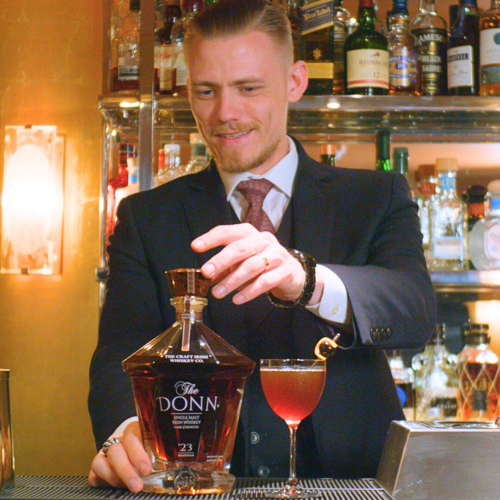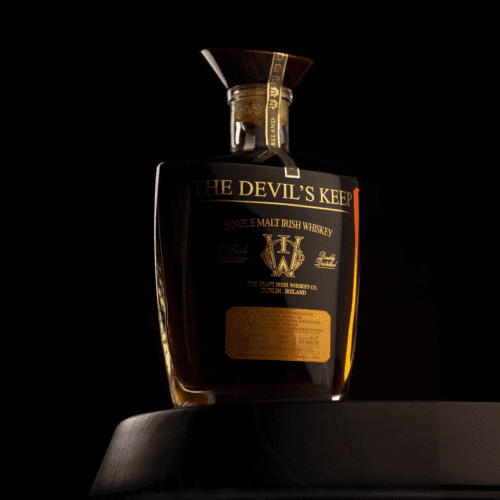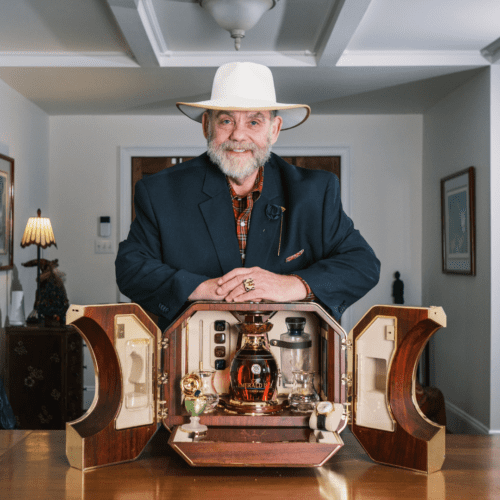Not all whiskey is created equal. In fact, it’s not even all spelled the same. In Ireland and the United States it’s ‘whiskey’. In Scotland and Japan it’s ‘whisky’ – without the ‘e’. Which one is the best? Well that all depends on your own personal palate. But in order to figure that out you need to know what to expect from each of the main types of whiskey. And just because the most devoted of whiskey enthusiasts disagree on what exactly is number one doesn’t mean that it’s not a fun debate to have. Join the conversation by learning more about the world of whiskey and what each style has to offer.
The History of Whiskey
Let’s get started with a brief rundown of several thousand years worth of whiskey history, shall we? Don’t worry…This is the best sort of history lesson. Distillation was invented in the Middle East as far back as 4000 years ago. But for centuries it was primarily used as a way to develop medicines, perfumes, and essential oils for religious ceremonies. The technique was eventually carried through Europe and arrived in Ireland by way of travelling monks during the first Millennia A.D. Those monks started running their spirit through heated metal tubes and it concentrated the alcohol content into a primordial sort of white whiskey. They even had a name for it: water of life. In Irish, that phrase is “uisce beatha,” which was eventually anglicised into “whiskey.”
The first written record of the term appears in the Irish Annals of Clonmacnoise. This carefully managed chronicle dating back to 1405 details the death of the head of a clan as a result of consuming excessive amounts of the liquid during a Christmas celebration! The Scots, meanwhile, can trace their earliest record back to 1494, when King James IV granted a large amount of malt to Friar John Cor to make his water of life – after proper duty had been paid, of course.
Up until this point, distillation was still largely the business of monks. But as King Henry VIII dissolved the monasteries in the 16th Century, the knowledge and practice spread out into the general public. And thus began the proliferation of whiskey makers, and whiskey drinking across the United Kingdom and Ireland. When the American Colonies were founded shortly thereafter, many of those intrepid settlers brought with them the skills of whiskey making to the New World. Eventually whiskey makers on both sides of the Atlantic would start to store their spirits in oak barrels, for convenience sake. Then they learned, by happy accident, that this wood actually imparted fantastic flavour into the whiskey–along with a brilliant amber colour. This is how we got the liquid that we know today as whiskey.
Types Of Whiskey
But no matter where it’s being made–or when–whiskey is reflective of the ingredients available in its direct vicinity of origin. That is, whiskey makers are going to rely heavily on the grains they have at their disposal. In the Highlands of Scotland, and the windswept fields of Ireland, this has historically equaled barley. In the New World it was more about corn and rye.
Today the main styles of whiskey include single malt–which is made from 100% malted barley, usually in Scotland (Scotch) or Ireland (Irish single malt); bourbon which is made from at least 51% corn in the United States; rye–which is made predominantly from its namesake grain, also in the United States; and blended whiskey, which can include all kinds of cereal grains, but usually it involves a component of grain whiskey which is distilled to be lighter and easier to drink than single malts which are usually heavier and more robust from pot still distillation.
Contemporary whiskey enthusiasts tend to shy away from blended and grain whiskey in favour of the more robust stuff, but that doesn’t mean you should. Blended whiskeys are usually pretty easy to drink, offering fruity aromas and flavours that go down easy. If nothing else, it’s a great entry point for people that are looking to ease their way into the world of whiskey.
Is Bourbon The Same As Whiskey?
So now you know the main types of whiskey and where they come from. But just to recap: whiskey is very generally any spirit distilled from cereal grains and aged for a certain amount of time in barrels. In Scotland and Ireland the liquid has to be aged in wood casks for no less than three years. In the United States, American whiskey merely needs to touch wood for a matter of minutes and it can still wear the term, ‘whiskey’ on the label. There are specific types of American whiskey, however, that have more restrictive parameters. Of these, the most popular by far is bourbon.
If you see the term “straight bourbon” on a label you immediately know a few things about the whiskey in the bottle. For one, it was aged for a minimum of two years in charred American oak barrels that have never been used before. In the industry these are often referred to as new casks, or virgin cooperage. Further, if there’s no statement of age on the label then it has to be at least four years in age. The liquid was distilled from at least 51% corn (the other 49% can be any combination of cereal grains) in the United States and no additives or colouring could have been added to the product. As a result of the new, charred oak as well as the prominence of corn in the mash bill, bourbon whiskey tends to have a woodier, sweeter taste profile than its Scotch and Irish whiskey counterparts.
The rules for bourbon were all set in place back in 1964 by an Act of Congress. And they’ve remained unchanged ever since. So, to answer the overarching question: yes, bourbon is most certainly the same thing as whiskey. It’s just a very specific sort of whiskey that has to come from the United States and has to be made primarily from corn. How is bourbon different from whiskey? Well, all bourbon is whiskey. But not all whiskey is bourbon.
A Few Notes On The Whiskey Barrel
Outside of the United States, most whiskey makers prefer to age their product in barrels that have been used before. Thankfully, they have a large and steady supply of these previously-used casks coming out of the US, because those barrels can’t be reused to make bourbon. Most of them will end up in Ireland or in Scotland as something called “first fill barrels.” Don’t let the name confuse you. If an Irish whiskey maker or a Scotch maker is talking about first fill barrels, they actually mean that the barrel has only been used ONCE before–most typically for making bourbon. But whiskey from Ireland and Scotland can be aged in any sort of previously used oak. Casks that previously held sherry, port, French wine, or madeira are common examples of the seasoned oaks they’ll use. And in Ireland, whiskey makers are actually free to use any sort of wood they’d like: chestnut, cherrywood, acacia and many more.
Because upwards of 80% of the flavour of a whiskey comes from the barrels in which it matured, these vessels play a massive role in shaping the liquids that you know and love. They are, in fact, more influential than the actual grains used during distillation. But that doesn’t mean those grains aren’t important at all. Everything comes together to form the final product, representative of a house style as distinct as a fingerprint.
The generalisations we use to apply to the major categories are just that–generalisations…a guidepost, and nothing more. Time-honoured tradition is what binds the whiskeys of certain regions to certain taste profiles. But that doesn’t mean innovative whiskey makers aren’t willing to find their own way within these respective landscapes. Bourbon tends to be sweeter and oakier; Irish whiskey tends to be rounder and more approachable; single malt Scotch can be smokier than the rest. These are the stereotypes. But there are always exceptions to the so-called rules. And any self-respecting whiskey enthusiast is going out there to find their favourite examples within all styles and all regions of production. So get out there and explore for yourself!










